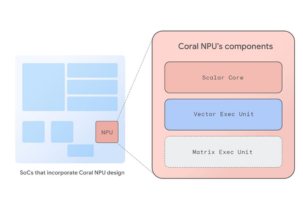Accelerating the Future: Innovations in Content Delivery Networks (CDN) - Seeking Your Opinion
10:29, 02.10.2023
The speed at which your content is delivered is one of the crucial parameters that determine the comfort of your website users. However, in many cases, it may be hard to reach the optimal indicators of speed without special additional measures. It’s good when your target audience is in the vicinity of your servers and enjoys minimal latency. However, in many cases it may be not exactly the case. What can help you is the implementation of a Content Delivery Network – CDN – a global network of servers that increases the speed at which your content is delivered to your end users while reducing the load on your main server. What should you know about Content Delivery Networks nowadays and what other benefits can they give you – let’s figure out!
Explaining the Mechanics of a Content Delivery Network (CDN)
In the first place, a CDN is a network of servers that are connected between each other and located at different sites. Its purpose is to optimize the velocity of content delivering for the comfortable Internet user experience. CDNs don’t store the entire information from your website at once. Instead, they rely in the first place on the caching mechanism: storing pieces of content requested by users for a period of time. For example, if a user from Romania requests content that is hosted on a server in the UK, the server will transfer that piece of information to the user but also to a CDN server in, say, Poland. This way, when accessed next time, the content will load a bit quicker while the load on the main server will decrease. Alternatively, all the content from the origin server is to be cached on CDN’s edge server, being immediately available.
Benefits and Upsides of Employing a CDN
A CDN is a powerful solution that, apart from speeding up your website’s content delivery, can be employed in various scenarios. Let’s have a look.
Enhancing Website Loading Speeds
First of all, by making the information bypass long stretches with not much latency, CDN greatly speeds up the loading speed of your website. Page load speed is one of the principal components of a pleasant user experience and is also a great contributor to the SEO rankings of your website.
Managing Increased User Traffic
Further benefits of applying a CDN are better management of high-traffic loads since the load is not only on the main server but is distributed across the network, giving a much lower probability that your website’s performance can be decreased by excessive traffic.
Amplifying Accessibility of Website Content
A CDN makes your content more easily accessible to a broader audience. Because the newly accessed files are cached on the CDN server, further users will be able to access these files much quicker.
Cost-Effective Hosting Solutions
A CDN is not a very expensive service that provides its users with remarkable benefits. For now, it can be considered an accessible, affordable, and efficient way to make your website work more rapidly for a vaster audience.
Enhancing Website Security Measures
A CDN can enhance the security of your website in many ways, both provided by the way a CDN works and by additional security measures that can be installed on top of it. These include:
- DDoS protection: CDN is efficient in mitigating DDoS attacks. Since your website is supported by a network of servers rather than by a single server, DDoS attacks will have much lower chances to overload your infrastructure and put your origin server out of operation.
- Web Application Firewall (WAF): Many CDNs offer Web Application Firewall (WAF) services as part of their security offerings. WAF is responsible for filtering out malicious traffic before it reaches the origin server. In addition to that, it can detect and prevent common web application attacks, such as SQL injection, cross-site scripting (XSS), and other vulnerabilities. All this results in an extra layer of protection for your website.
- SSL/TLS Encryption: CDN servers can take part in the encryption process by providing SSL/TLS termination, meaning that the encryption takes place between the user and the origin server, offloading it.
- Bot protection: CDN can also independently identify and block malicious bots that are used for various purposes.
- IP Whitelisting/Blacklisting: A CDN often allows you to specify which IP addresses should be blocked, to protect your content from undesired access.
Determining Scenarios Unsuitable for CDN Adoption
Although a CDN can be a solution for various usage scenarios, it’s not a solution for all problems. Therefore it’s worth figuring out, what types of content are not completely relevant for caching on a CDN.
Immutable Static Content
Immutable static content refers to content that is not supposed to be edited or in any other way changed over time. This includes images, videos, stylesheets, JavaScript files, fonts, and other static assets. For the most part, immutable content is well suitable for CDN adoption, and is, in fact, the main type of content for CDN, since, given the content’s immutability, it is the same for all users and can thus be cached and stored independently at different locations.
There are, however, certain cases where a CDN is not exactly the match for immutable static content. This can regard first of all some highly sensitive data of the integrity of which affects the security of your enterprise and its customers.
Dynamic Content Delivery
Dynamic content in turn refers to the content that is created and modified in real time. It can comprise web pages with user-specific information, personalized dashboards, e-commerce sites with dynamic product catalogs, and interactive web apps. When it comes to dynamic content, caching it poses certain challenges, since the cached content must be regularly updated as well. However, modern CDNs have evolved to handle dynamic content to some extent using various techniques like edge-side includes (ESI) and caching dynamic fragments.
With this, in certain scenarios, CDN caching for dynamic content turns out to be unsuitable.
Highly personalized real-time data
When highly personalized real-time data that needs immediate updates are contained within the dynamic content in question (e.g., real-time notifications, live chat messages) the data can be unsuitable for caching.
Security and access control
Some dynamic content may have strict access control requirements or contain sensitive information. In these scenarios, it might be preferable to handle the content directly from the main server rather than rely on a CDN.
Dynamic transactions:
Content involving dynamic transactions, such as payment processing or user interactions that trigger server-side actions, may not be suitable for CDN caching due to potential data consistency issues.
Distinguishing CDN Variants
There are different types of CDN depending on their approach to content delivery and caching. Let's distinguish between the two main types – Proactive Push CDN and Responsive Pull CDN.
Proactive Push CDN
A Proactive Push CDN, also known as a "Push CDN" or "Push-based CDN," operates on a proactive approach to content delivery. In this variant, the CDN servers pre-fetch and cache content from the origin server primary to any requests. The CDN takes the initiative to push content to its edge servers based on preset rules.
It works in the following way: when new content arrives on the main server, Push CDN sees these changes and proactively pushes the updated content to its edge servers.
This approach provides that any user can access any part of content immediately, with fewer requests to the origin server and faster response times for users.
It’s advantages are:
- Minimal latency: With content already uploaded to CDN’s edge servers by default, every user will benefit from the low latency ensured by CND at any time.
- Improved reliability: Even if the origin server doesn't respond for this or that reason, the website content can still be accessible in the cached version.
The downside of this approach is expressed in an increased resource consumption associated with storing the whole content available.
Responsive Pull CDN
A Responsive Pull CDN, also known as a "Pull CDN" or "Pull-based CDN," operates on a reactive approach to delivering content. In this scenario, the CDN servers respond to user requests by pulling the content from the main server on demand.
It works this way: once the user makes a request for specific pieces of content, the Pull CDN server closest to the user, responds to it. After that, if the requested content is not yet at the edge server, the CDN server pulls it from the main server, delivering it to the user. Afterward, the content remains on the edge server for a certain period of time, remaining available for further use.
Its advantages are:
- Efficient resource utilization: The content is pulled only when requested, so things that aren’t requested too often don’t occupy the server resources.
- Up-to-date content: Since the content is updated more frequently, there is a higher chance that the users will access the latest versions of it.
Comparing both options, we can say, that although it doesn’t provide this immediate performance Push CDN is characterized by, Pull CDN is more flexible in terms of resource use. Which option to choose is up to you and depends on your approach and your needs, the specificity of your projects. But it’s at least important to know what kind of choice you have.
Final Thoughts and Wrap-up
CDN is a geographically distributed network of servers that helps you deliver content to your end users with significantly lower latency by storing it on edge servers. Besides speeding out your content, a CDN offers better traffic and load management as well as certain additional security measures. Summing up, CDN is a great solution if you want your content to be accessible to a geographically distributed audience, as long as it cannot be covered by your origin server.


